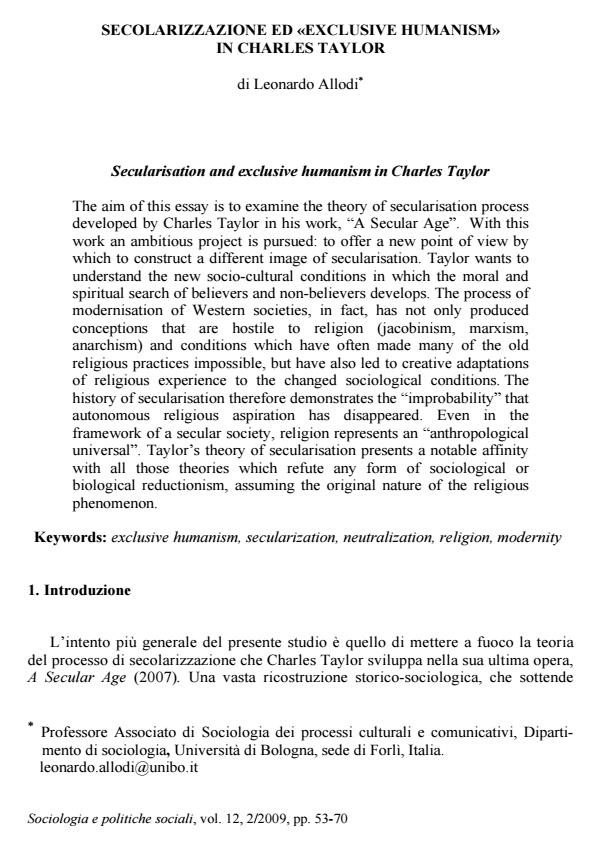Secolarizzazione ed "Exclusive humanism" in Charles Taylor
Journal title SOCIOLOGIA E POLITICHE SOCIALI
Author/s Leonardo Allodi
Publishing Year 2009 Issue 2009/2
Language Italian Pages 18 P. 53-70 File size 224 KB
DOI 10.3280/SP2009-002005
DOI is like a bar code for intellectual property: to have more infomation
click here
Below, you can see the article first page
If you want to buy this article in PDF format, you can do it, following the instructions to buy download credits

FrancoAngeli is member of Publishers International Linking Association, Inc (PILA), a not-for-profit association which run the CrossRef service enabling links to and from online scholarly content.
Secularisation and exclusive humanism in Charles Taylor - The aim of this essay is to examine the theory of secularisation process developed by Charles Taylor in his work, "A Secular Age". With this work an ambitious project is pursued: to offer a new point of view by which to construct a different image of secularisation. Taylor wants to understand the new socio-cultural conditions in which the moral and spiritual search of believers and non-believers develops. The process of modernisation of Western societies, in fact, has not only produced conceptions that are hostile to religion (jacobinism, marxism, anarchism) and conditions which have often made many of the old religious practices impossible, but have also led to creative adaptations of religious experience to the changed sociological conditions. The history of secularisation therefore demonstrates the "improbability" that autonomous religious aspiration has disappeared. Even in the framework of a secular society, religion represents an "anthropological universal". Taylor’s theory of secularisation presents a notable affinity with all those theories which refute any form of sociological or biological reductionism, assuming the original nature of the religious phenomenon.
Keywords: exclusive humanism, secularization, neutralization, religion, modernity
Leonardo Allodi, Secolarizzazione ed "Exclusive humanism" in Charles Taylor in "SOCIOLOGIA E POLITICHE SOCIALI" 2/2009, pp 53-70, DOI: 10.3280/SP2009-002005